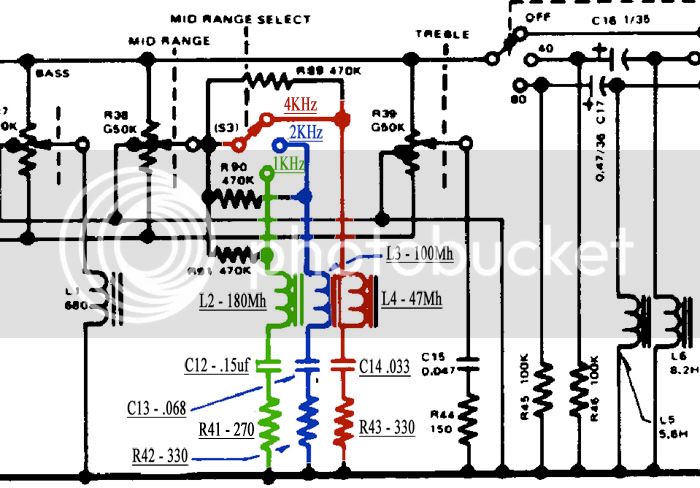Matt C
Well-known member
A question I've been wondering about while looking at the Yamaha PM1000 EQ circuit, although my question is more general:
Looking at the series LRC filter shown below, I'm wondering about the reasoning for choosing these particular pairings of inductors and capacitors. For any given center frequency there are many combinations of values that will get the job done, so why settle on one instead of another? I know changing this ratio changes the Q factor, but we can also adjust the R value to compensate. Does this in turn affect max boost/cut? What are the trade-offs we're looking at here?

Looking at the series LRC filter shown below, I'm wondering about the reasoning for choosing these particular pairings of inductors and capacitors. For any given center frequency there are many combinations of values that will get the job done, so why settle on one instead of another? I know changing this ratio changes the Q factor, but we can also adjust the R value to compensate. Does this in turn affect max boost/cut? What are the trade-offs we're looking at here?



